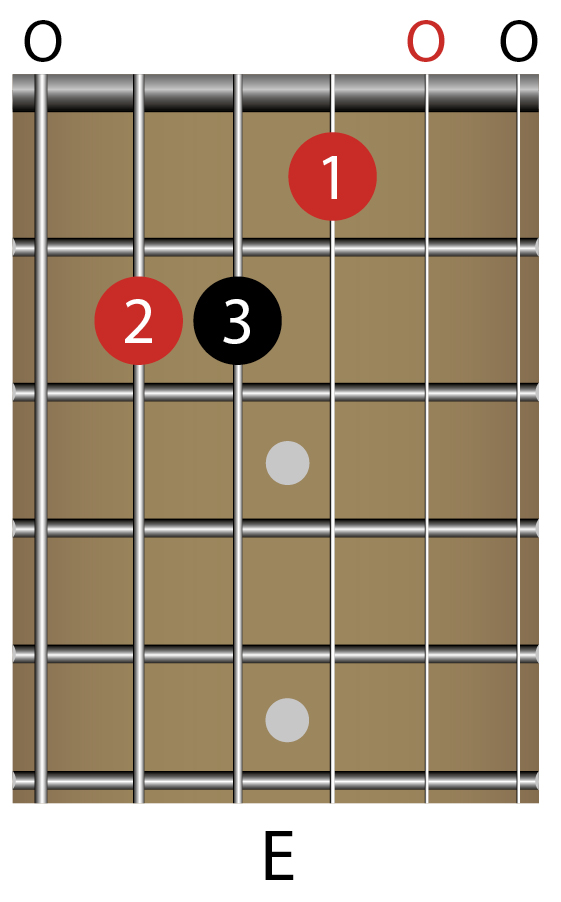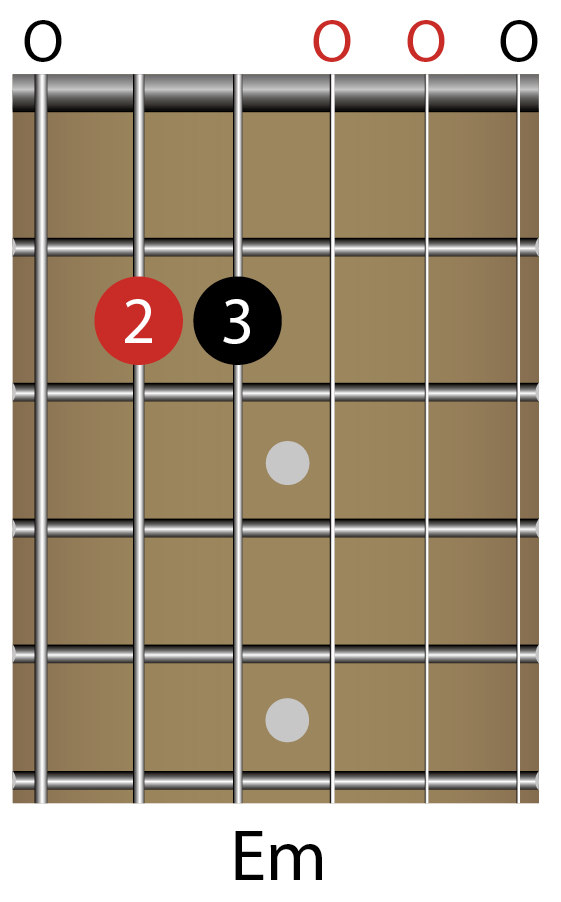E major is one of the easiest and most important chords for any beginner guitarist to learn. It's used in loads of songs from classic rock to contemporary pop and it has an even easier nearby neighbour chord for you to try out – E minor.
It can also be used as the foundation for a bunch of other chords known as 'barre chords' – so it's a useful one to know. We'll come on to lots of other chords, including those barres in future lessons.
For now, Guitar World's Greg Coulson shows you how to play E major (usually written as just 'E') and E minor (Em), helping to you to avoid the pitfalls as you go.
E major chord
Greg starts off with the E chord. Our diagram here is a handy reminder of the fingering pattern. The numbers tell you to use your first, second and third fingers and on which strings and frets. The 'O's at the top tell you that these strings are un-fretted (aka 'open' strings). Black denotes an E note. Red is for other notes in the chord.

E minor chord
If you can play the E chord then why not give Em a go? If you're starting on the E chord all you have to do is lift your first finger off of the third string so that it's open. If you hear any choked notes you've probably positioned your fingers at an angle and accidentally muted a string. Fret each string with the very tips of your fingers to avoid this.








